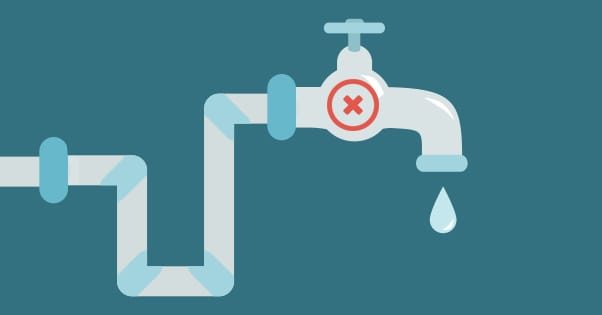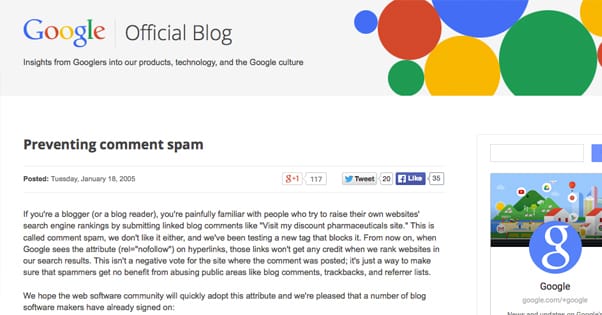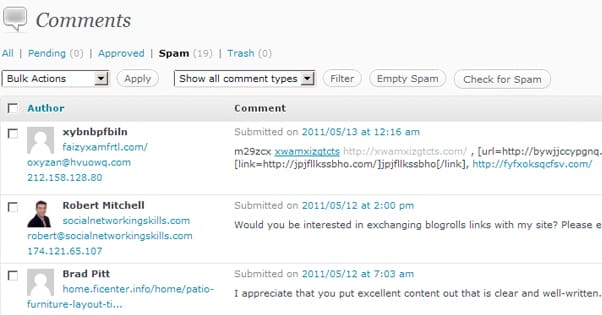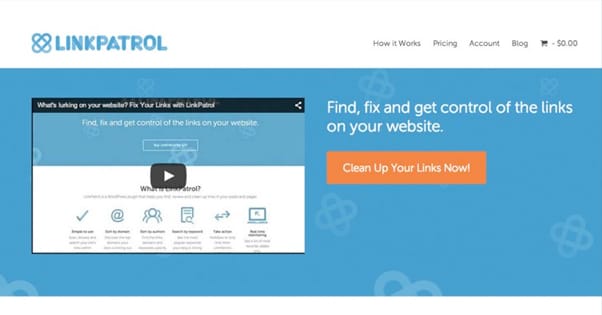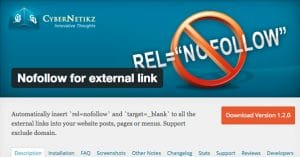The Ultimate Guide to Using Nofollow on Your Blog Posts
Published by James Parsons • Content Marketing • Posted June 18, 2015 ContentPowered.com
ContentPowered.com
Depending on how much attention you’ve paid to your links over the last few years, you may be in for a surprise when you learn about nofollow. Nofollow is a meta attribute that can be attached to links, to give them different properties when Google discovers them. It’s a modifier; the default version is a dofollow or followed link.
Links Are the Backbone of the Internet
The Internet was founded on the concept of sites and links between them. In the beginning, a link was just a way for someone to get from one site to another without knowing the name of that site directly. Since then, Google has made some significant changes.
When there were only a few thousand sites, it was easy to index them all and pull them up as they were relevant. After all, a given topic might only have 2-3 relevant sites. It seems like a fantasy, but such a time really existed.
Once the Internet grew to a point where Google had to rank sites based on their relevance and value, though, that’s when things got messy. They had to decide how to rank sites, and one of the methods they chose was to monitor links. A good site tended to have more links pointing at it, while a poor site wouldn’t have many.
This brought along other problems, most notably spam. Spammers would find, for example, the comments section on a blog and post their link there. Google would see site A has a link to site B and would count that link as a vote of confidence, just like any other link, even though site A had no idea the link was there.
Even once comments got their moderation, there was still the issue that any time you linked to the “wrong” site, that link counted to promote that site. If you ever linked to a competitor, it benefits the competitor. If you link to a site in a completely different industry for an unrelated reason, that site may benefit, or maybe not; if the link looks artificial, Penguin might penalize them.
Why Nofollow Exists and Matters
Nofollow was invented as a way to fix these problems. I mentioned that links are treated essentially as a vote of confidence, a vote from your site to another site. Nofollow as a meta attribute modifies a link and removes that vote of confidence. The link is still there, and people can click it all they like. That alone can benefit the destination site, if the users like that site, but it’s not an algorithmic benefit from the link itself.
Nofollow, notably, does not actually prevent the search engines from following the link and indexing the content on the other end. It’s not a way to prevent Google from finding a hidden page. You’d want Noindex for that, and that’s a subject for an entirely different post.
Some Downsides to Nofollow
There’s more than one downside to nofollow. I mentioned the first one already; the name is misleading. Why would it be called nofollow when it explicitly still allows the search engines to follow the link? Well, the name likely refers to PageRank; a type of beneficial juice that would follow the link to the destination page. PR is blocked by nofollow, though those terms aren’t strictly accurate these days. Google has more or less retired the concept of PageRank and has replaced it with something more accurate.
Another issue is that nofollow doesn’t actually prevent spam. A link is still a link, and links are still valuable, even when they’re nofollowed. Spammers, both of the guest post variety and the comments spam variety, still want links from as many domains as possible, primarily in the hopes that some will slip through the nofollowed cracks. Nofollow itself does nothing to prevent spam in general.
When overused, nofollow can harm the Internet ecosystem as a whole. Search engines and ranking rely on followed links, so if too many links become nofollowed, Google will have to find a new way of judging and ranking sites. I’m sure they would adapt, but it would be a needless change. I’ll discuss when and where to use nofollowed links a little later.
Another problem is that it relies on the website owner to be an accurate judge of whether or not a link is worth nofollowing. Every site owner will have their own concept of what is and isn’t worth it, and others will just blindly nofollow everything to avoid having to think about it.
Now, let’s discuss different types of links you can find on a given site, and whether or not you should use nofollow for them.
General Content Links
First off, you have all the links you make in general content. For example, this one right here. These are the most common links people think about when they consider links on a website, and they’re also the most variable in how you should treat them. Essentially, consider every link on an individual basis.
By default, links you make in your content should be left followed. However, there are a few exceptions. Any time you create a link, consider the content of the link. Is it something you would post on your own site? Is it up to your quality standards? Is it covering a relevant topic? These are links you can leave followed.
Conversely, is the site spammy? Is their content unrelated to your site in any way? You may want to nofollow these sites. More often, it’s just better not to link them at all, and use screenshots if you want to use them as an illustration of a point. After all, a link helps the destination site, even if that link is nofollowed.
Navigation links are often ignored when people consider links on a page, because they’re all in-site links and they’re all taken for granted. You don’t always consider that linking your logo to your homepage, which is a standard feature of most websites, is still a link.
Would you want to nofollow your navigation links? No. After all, it’s not like you need to worry about the PageRank you pass from one part of your site to another, right?
Nofollow cuts off the flow of value from page to page, and internal links actually are important to that flow. Matt Cutts recommends that you keep your internal links followed. There’s only one exception, generally, and it will be mentioned later in a different section.
Nofollow is often used in this manner as a tool for PageRank sculpting. PageRank sculpting is a black hat technique where you try to direct and control the flow of link juice throughout your site, to emphasize certain pages over others. It’s considered unnatural SEO, and can be harmful to your site. So, that’s another reason to avoid nofollowing internal links.
Most footer links tend to be the same sort of links as navigation links. In fact, many websites have footers that share many links with navigation. Obviously, those links can be treated the same way as navigation links.
What about links that only ever go in the footer, like links to a terms and co
nditions page, a privacy policy page, a contact form, or something of the like? These can be nofollowed if you want, and it won’t hurt your site. On the other hand, it doesn’t hurt you to let them be indexed normally, either.
What about links to other sites that end up in your footer? For example, links to a parent company, links to the BBB, links to a security place that runs your checkout security, links to your web designer, and so on. Links like these are often relatively valueless for SEO, but are important for credit and legality. I’ve seen people recommend nofollowing them, but I don’t think it matters. It’s not like they’re spam sites, or sites that would hurt you by association. They’re just normal informative links. Keep or nofollow; the choice is yours.
Paid Articles or Guest Posts
These are the big ones, and the cause of the great debate.
One common way of “gaming” the link system up until Google Panda was to write guest posts for other sites. The posts didn’t have to be great or important, they just had to exist. The caveat, typically, was that the author demanded a followed link back to their site, either in their content or in the author bio section at the bottom.
The problem that often came up was that the destination of the link was not a valuable site, even if the content was fine. In many cases, it might have been an article scraper or spam site trying to get enough link juice of its own to pass it on to a bigger and “better” site, in part of a wide-ranging link scheme.
Google began to penalize these links, which led to the mass rejection of guest posts and the modern day stigma attached to them. These days, if you accept money in exchange for publishing a piece of content, or if you’re publishing a piece of content written by a guest writer, you should audit the links in the post.
Any link that goes to a bad site, remove. Don’t negotiate, don’t nofollow it, just remove it. Any link that goes to a mediocre site, but a site you could see linking to, feel free to nofollow. The only links you should leave followed are those you would see yourself linking to had you written the content, and are not placed for SEO or artificial value.
Comments Links
Comments links started this discussion, and it’s only appropriate that they feature heavily this far in. Most comments fields have a space for website or contact email, and even if they don’t, the comment itself allows links in most unfiltered situations. It’s rare that you’ll find a comments section that filters out web addresses but still allows spam.
Spam filters like Akismet are great for blogs because they filter out the majority of any spam that comes your way. If you’re very confident in your filters, and you regularly audit your links, you could leave comment links followed. However, I don’t recommend it.
Comments are one of a few types of user-created content, and user-created content should always be nofollowed by default. Imagine a situation where a user can enter your site, place a link you don’t like on 50 different blog posts, and then disappear into the night. You might call that hacking, if the link was embedded in code rather than posted plainly on comments. Treat them the same way; remove them.
In general, links in your comments that you allow to survive are fine to leave followed, but you should instead make all comments links nofollowed. This prevents any spam links that slip through from having value.
General Guidelines
I’m sure you can think of links in a few places that I’ve missed. So, rather than try to exhaustively catalog every possible type of link that could exist and tell you whether or not it should be nofollowed, I’ll just give you a few general guidelines. You can use them to make judgments yourself. Remember; the default state of a link is followed. You have to add the nofollow attribute to make a nofollowed link.
First, nofollow links to untrustworthy content. Remember that a link is a vote of confidence. If you don’t want to vote for the destination of the link, don’t follow that link. Leave the link unfollowed. This includes any instance where you might be linking to a poor quality site or a spam site.
Second, nofollow links posted in any sort of user-generated content. This includes comments sections, feedback forms, shoutboxes, and guestbooks. This helps you avoid sending any of your hard-earned link juice into dark pits of spam and stolen content.
Third, nofollow any links that were paid for, whether they’re sponsorship links or just links in paid content. Google themselves say that you should have a machine-readable disclosure of any paid links as well, just in case.
Fourth, nofollow links to content that isn’t publicly visible or that you don’t want the search engine to index. One important note; if you don’t want the search engines to index it, use noindex as well. This can include hidden content, as well as content locked behind a paywall or behind a registration form. These scripts are not parsed by Google, and Google doesn’t log in to your site, so they can’t follow those links anyways.
Auditing Links with Link Patrol
I started this post off with the situation where you’re only just now finding out that nofollow exists, and that means you have a lot of catching up to do. If you’ve never implemented it before, you may have some SEO benefit waiting for you was soon as you nofollow the worst links on your site.
How do you audit those links? I like to use Link Patrol. Link Patrol is a WordPress plugin made by Search Engine Journal, and it can be found on LinkPatrol.com. What it does is scans your site for any and every link, and harvests data about those links, including which authors published them, what keywords they use as anchor text, what domains they link to, and more. You can use it to spot authors trying to abuse your links. You can use it to scan for over-optimized anchor text, a modern Penguin penalty. You can even use it to find hidden links that come from being hacked, if that has ever happened to you.
Using the plugin is easy. First, you need to download it and install it following the instructions given to you. Once it’s installed, just go to your WordPress dashboard and go to the new Link Patrol entry in your sidebar. The first time you click it, it will be a mostly blank page with a “scan now” button.
Click to run a scan and wait. When it’s done, you’ll be sent to a page with reports about your links. The one you’re looking for here is the domain report. This will list domains and the number of links pointing to them. Social links will be the biggest, usually. Scan through these domains and look to see if the links are worth keeping.
If not, you have two options. You can click the “nofollow” box, which will automatically apply the nofollow attribute to every link point at that domain. The other option is the “strip” box, which removes the links entirely.
Finding Broken Links
While you’re auditing your links, here’s another thing you should do; check for broken links. Link Patrol doesn’t do this, so you’ll need another plugin. This time, it’s the Broken Link Checker for WordPress.
This plugin is downloaded and installed the same way as Link Patrol, and it shows up in the same place; on your dashboard. Once installed, it needs to scan your posts to fetch links, just like Link Patrol. However, this time it has a second phase, where it goes through each link to test to see if the link exists. If broken links are identified, they will appear in a “broken links” section in your tools menu on the dashboard. If your site is particularly large, it will take a long time to scan and check every link, so you can set the plugin to email you when a broken link is found.
You can deal with broken links however you like. I recommend removing them and replacing them with better links covering the same topic. Occasionally a link was fundamental to content, so you may have some rewriting to do. That’s up to you.
